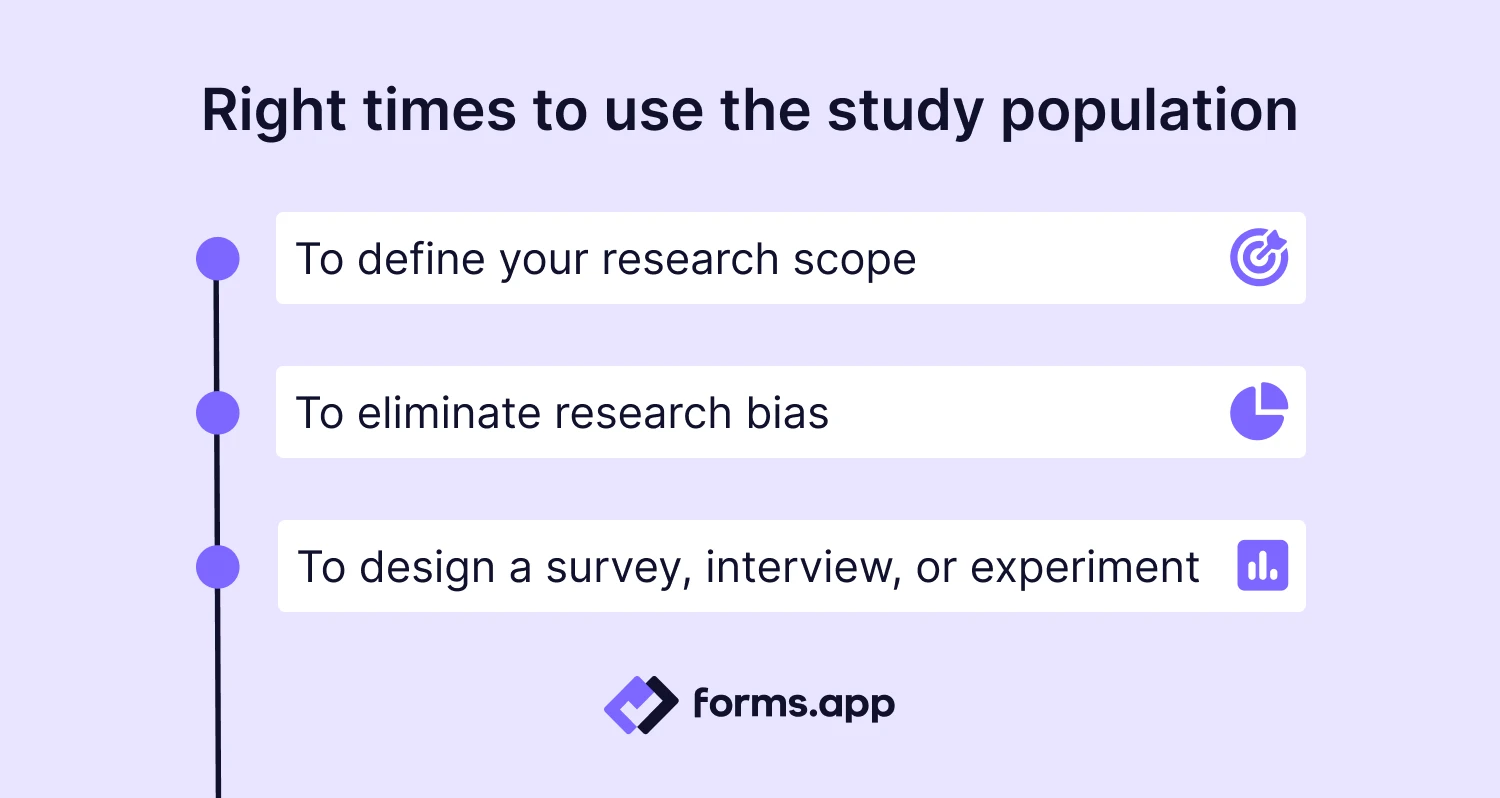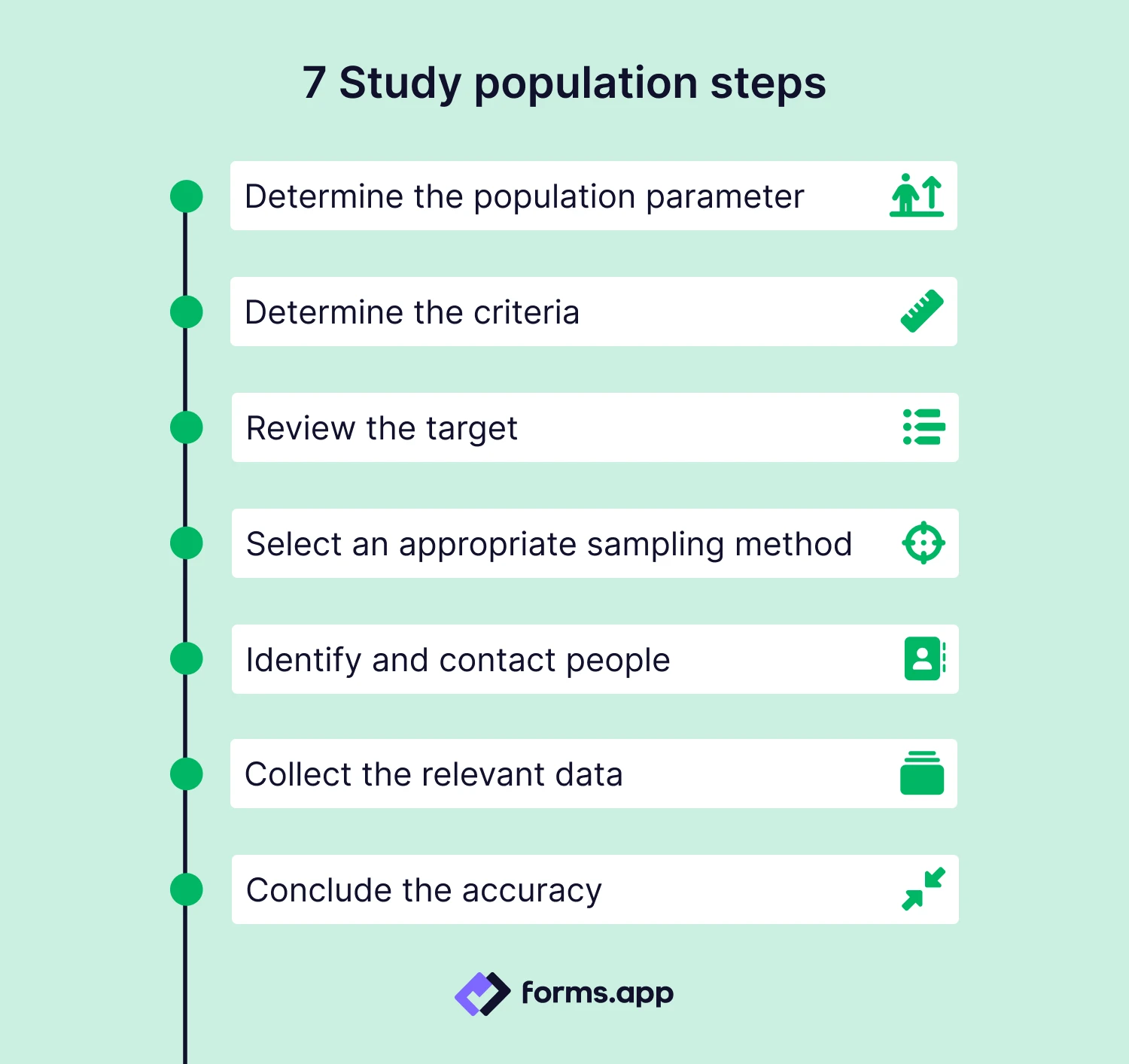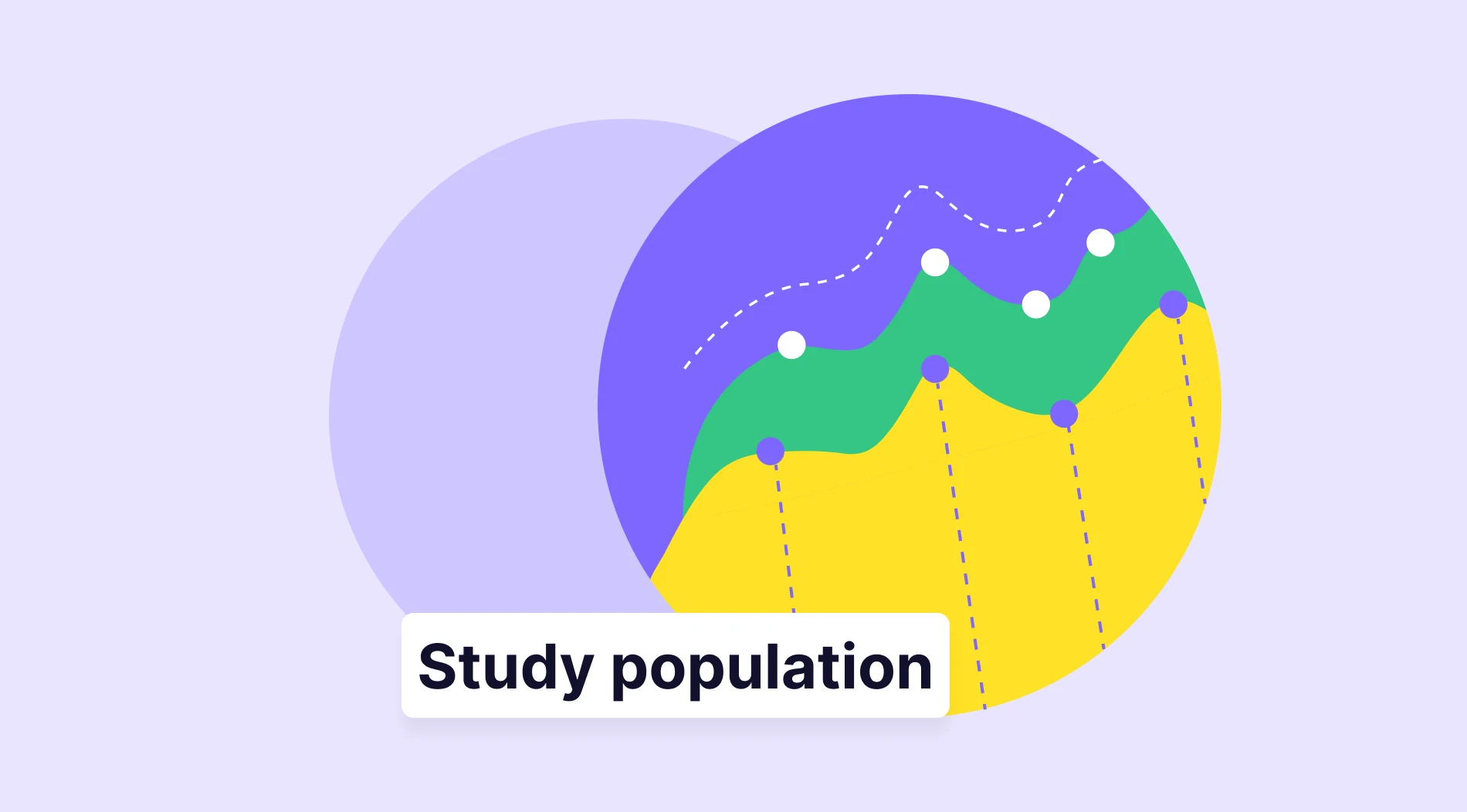You are doing research, and you realize that the sample size of your research is quite large. You think that such a large sample size is not suitable for your purpose, or it is far from giving accurate results. But what should you do? This is where you might think that you can use the study population. You are now able to select a group of interest you are going to research.
What is a study population?
A study population is a prespecified group of people, units, or entities that is used to derive results for a specific study.
So, it hasn't been limited to the human population, but all kinds of things that share a common point can be used as study populations. Therefore, its application area is quite wide; it is used on a wide scale, from medicine to the economy. For example, when it is desired to diagnose an infectious disease commonly seen in children, the population of the study in this case is individuals between the ages of 0 and 12.
It shouldn’t be confused with the target population. Not every target population is a study population. The target population is a bit larger in size and reflects the overall population, but the study population is only one part of that population. So, the study population vs the target population are different terms.
When to use the study population
The study population's usage time is quite straightforward and can be illustrated with a few examples. At the very base, the usage time is when you want to get information about a particular group for research. Now, you can check more examples below:

Best times to use the study population
⏰ When you want to define the scope of your research, you can use it to focus on a particular group with commonalities. For example, in educational research, a study population can be selected to examine students at a specific level, categorized by age groups, socioeconomic status, or achievement status.
⏰ When you want to eliminate research bias, a study population with clear boundaries will be useful for minimizing selection bias in your research. Since the options for the target group will be more limited, it will allow you to obtain more reliable results.
⏰ When you want to design a survey, interview, or experiment: Whether you are conducting a quantitative or qualitative study, you will have a guide with the study population. The population will directly determine the type of questions to be asked. For example, in a survey prepared for market research on the consumption habits of teenagers, the questions will be tailored to the age group of 10 to 18.
Study population steps
You should be cautious when choosing an appropriate study population. Now, there will be some steps for you to see how it is usually done:

7 steps for study population
1. Determine the population parameter: Based on your research, choose your target population. A large but easily controllable population is an excellent way to generalize your findings.
2. Determine the criteria: Identify the criteria you will include and exclude from your population sample. The criteria should also align with your research for reliability.
3. Review the target: Consider how much of the target audience you can easily reach. Remove from the list any population with restrictions or that is inaccessible.
4. Select an appropriate sampling method: Choose a sampling technique, such as probability sampling or non-probability sampling, and calculate your sample size accordingly.
5. Identify and contact people: Find and contact people who will participate in the research. You can use a sampling frame to see every member of your population clearly. Don’t forget ethical considerations.
6. Collect the relevant data: Gather your data using data collection methods such as surveys, interviews, etc., and start processing them.
7. Conclude the accuracy: In the last step, you can evaluate the representativeness of the sample by comparing it to a larger population.
Study population techniques
It can be said that the two main techniques (probability sampling and non-probabilistic sampling) are generally used to perform a study population. These are methods whose suitability may vary depending on the purpose of your research. Therefore, it would be beneficial to learn about the various sample techniques in detail below and then select them accordingly.
Now let's examine the kinds of sampling:
1. Probability sampling
It is a method in which sample objects are prepared based on probability theory, which means they are randomly selected. Every object/person is likely to be selected, and no discrimination is made in this selection, so selection bias is out of the question. The three most common of these techniques are:
a. Cluster sampling
Cluster sampling is a research method used in cases where it is difficult to examine the entire population for various reasons. The population is first divided into groups called clusters and the boundaries between them are drawn. Then, one of them is selected and examined only one at a time.
b. Systematic sampling
Systematic sampling is a research technique for selecting members of a sample from a large population at fixed intervals with a random beginning. But this interval is determined in advance. It is calculated by proportioning the population size to the desired sample size.
c. Stratified sampling
Stratified sampling is a simple random sampling method used to take a sample from strata. This method is especially used to examine structures with heterogeneous distribution and produces possible results about the population.
2. Non-probabilistic sampling
This method is the method in which the researcher intervenes and manages the sampling process. Objects/persons that are members of the population are not included in the sample equally. The three most common of these techniques are:
a. Convenience sampling
Convenience sampling is a nonprobability method for selecting a sample because of its availability. It is used for reasons such as having a sample available and advancing the research more quickly. It is also ideal for examining populations, especially those with volunteer participants, and is therefore known as an easy and cheap method.
b. Snowball sampling
Snowball sampling is a research method in which the researcher begins with a small number of initial respondents and then requests that they recruit additional participants. This method is used in study populations that are difficult to reach and where the network is important.
c. Purposive(judgmental) sampling
In purposive or judgmental sampling, the sample is selected from individuals who share certain characteristics or criteria that are relevant to the research question. Based on their knowledge and experience, researchers decide from which source the required data can be obtained most appropriately. In this way, in-depth information about the study population is learned, but this is too exceptional to be applied to the entire population.
Pros and Cons of the study population
Each research method has its good and bad sides, and it is necessary to take this into consideration. When you want to build your research on a solid foundation, you can read the positive aspects of the study population and determine where and when to benefit from it, on the other hand, you can learn its negative aspects and understand where and when to avoid mistakes.
Pros
➕ A good sampling with highly accurate results
➕ Well-suited for a variety of survey types
➕ Time-efficient and cost-effective compared to studying the entire population
➕ Beneficial for large study populations
➕ Requires fewer resources to achieve reliable results
Cons
➖ Risk of sampling bias in the selection process
➖ Limited availability of reliable data sources
➖ Potential for sampling errors during the process
➖ Issues with accuracy if sampling is not done properly
DOs and DON’Ts of the study population
Although the study population is not a very sophisticated research method, you still need to consider some things to minimize errors. Here are some things you should and should not do to expand your knowledge about the study population:
DOs
✅ Make a clear-cut definition of your population
✅ Choose a sampling technique that is parallel to your research
✅ Respect the consent and privacy of the participants
✅ Plan according to your budget and the size of your research
DON’Ts
❌ Ignore any selection bias
❌ Overgeneralize your findings in all situations
❌ Rely on a sample too small
❌ Forget to consider various variables that affect the situation
Final words
All in all, the first step in conducting research is choosing the study population. A well-chosen population is more easily definable and improves data quality. Several techniques exist, each uniquely suited to a particular situation. The article mentions these so that you can learn detailed information about the study population with examples. First, the article starts with the study population’s meaning and definition of the concept.
Then, the situations in which it can be used are stated. After that, it shows the step-by-step implementation and the techniques that can be used while applying it. Finally, the article concludes by listing the opposites of the study population, including pros and cons, as well as dos and don’ts. Now, you are equipped with the necessary information to select a suitable study population.
Sena is a content writer at forms.app. She likes to read and write articles on different topics. Sena also likes to learn about different cultures and travel. She likes to study and learn different languages. Her specialty is linguistics, surveys, survey questions, and sampling methods.



